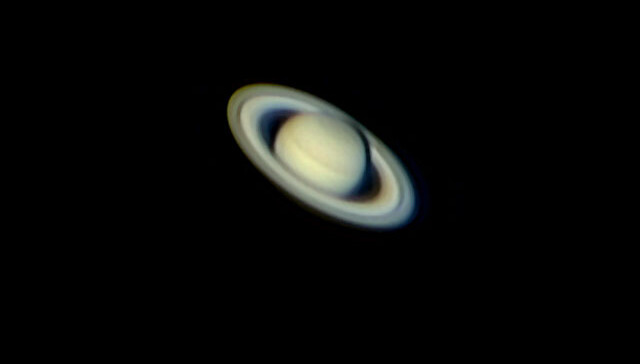Our solar system’s resident ring-bearer Saturn will be visible with its iconic rings on August 11th-12th.
It’s the first time in 15 years that the southern face of Saturn’s rings will reach a tilt of 3″. It will be visible from Earth through a basic telescope, and the perfect opportunity for introducing newbies or children to the majesty of Saturn.
That’s just one of three spectacles Saturn will stage in the night sky this month. Next week it will pass in conjunction with distant Neptune, and later in August, for those dedicated stargazers, the second-largest planet will darken under a shadow cast by its large moon Titan.
Here’s how to partake in the Saturn spectacular.
On August 3rd at 2:04 a.m. US Eastern Time, Titan’s shadow will darken Saturn’s disk, taking about 17 minutes to become visibile. By about 4:30 a.m. EDT, the shadow sits midway across the disk.
On August 6th, Neptune and Saturn undergo the second of three conjunctions this year. Both objects rise together for a period towards the beginning of the month, and can be found low in the eastern sky in the western part of the constellation Pisces.
Neptune is easily seen through a telescope hovering due north of Saturn, but will even be visible with binoculars. Viewing both planets together is rare, according to Astronomy.com, but during this conjunction they will fit within a single lens view.
Neptune is 1.9 billion miles away from Saturn, and the diameter of Saturn’s rings will be more than 5-times larger than Neptune. Fun fact: Neptune also has rings—they’re piercing blue like the planet itself.
On the night of August 11th into early morning of August 12th, Saturn’s rings will tilt 3 degrees, allowing stargazers to see the flat undersurface rather than just the band.
For those on Pacific or Mountain Time in the US, consider turning up for the second Titan shadow event on August 18th, 10:26 p.m. PDT / 11:26 p.m. Mountain. Two and a half hours later local time, the shadow will sit in the middle of the disk.
SHARE August’s Stargazing Offerings With Your Friends Who Enjoy The Stars…
